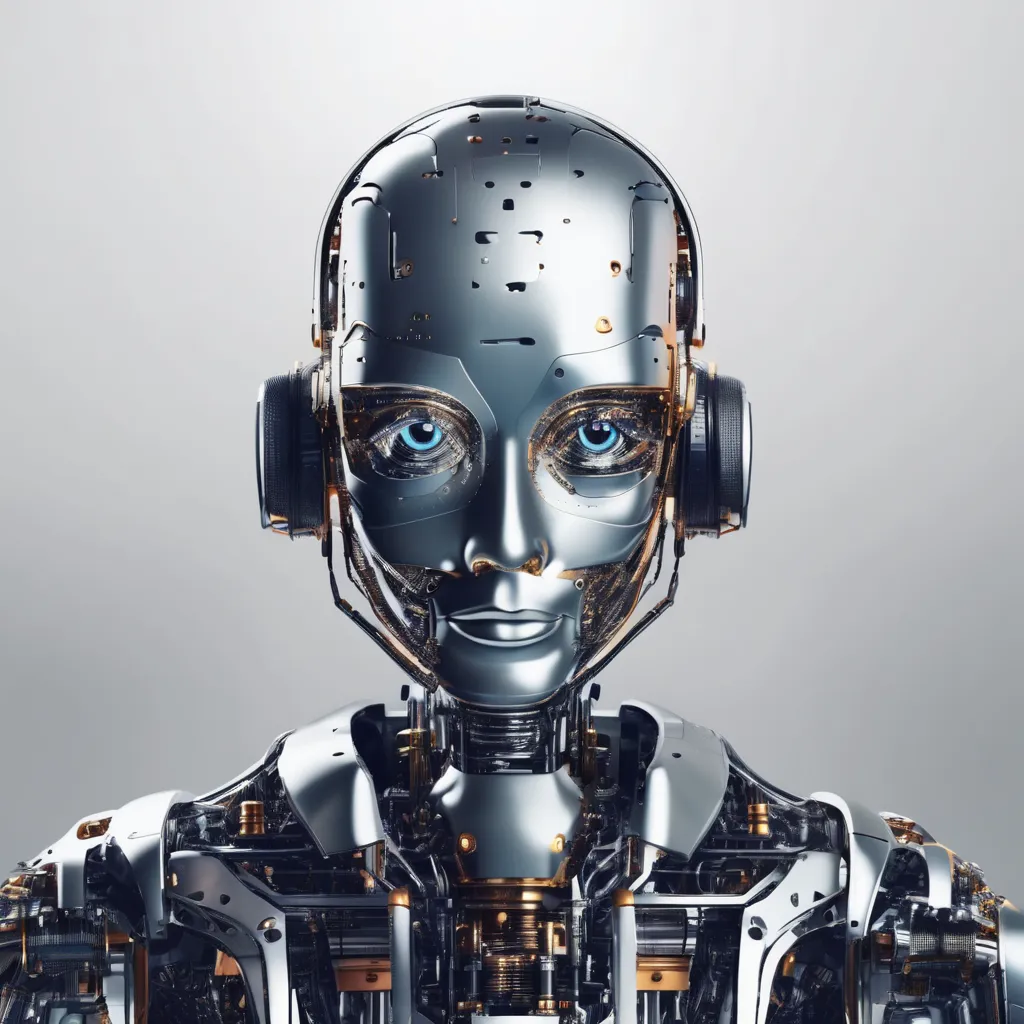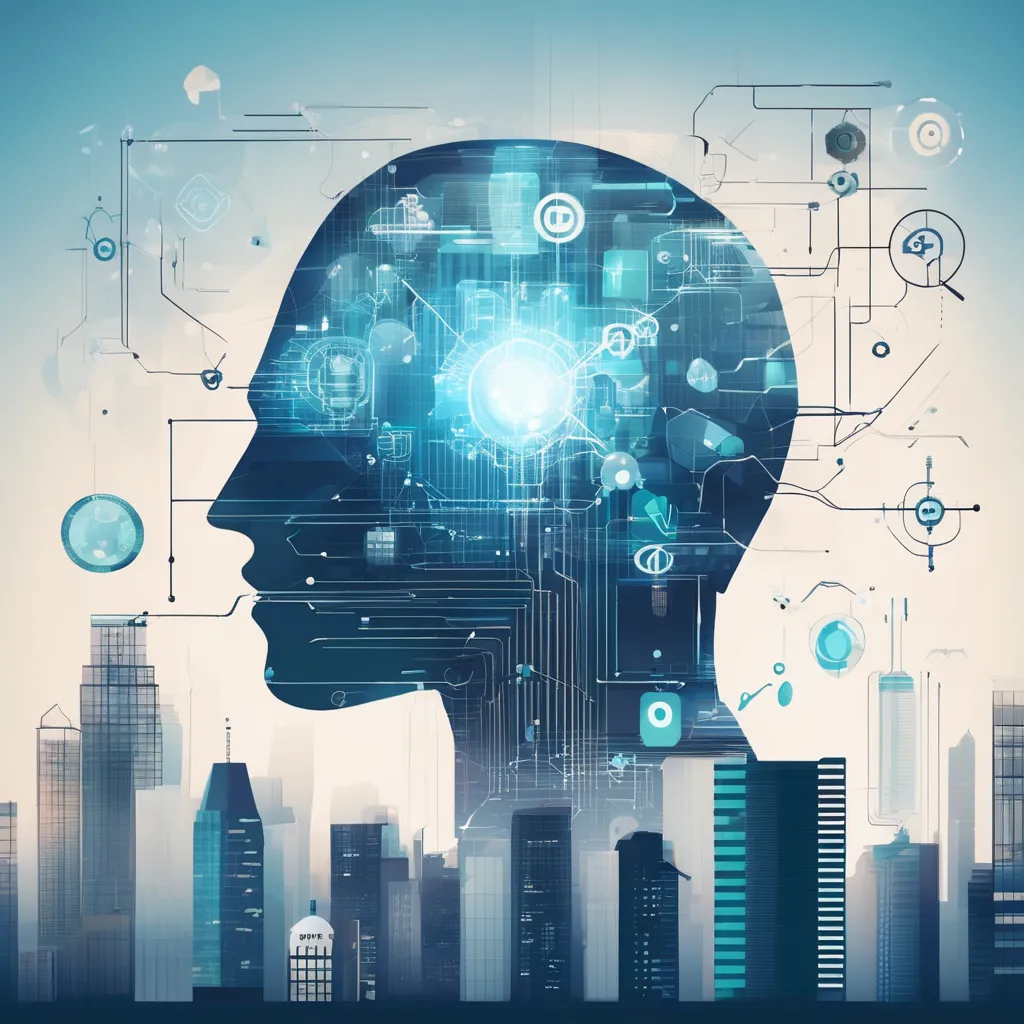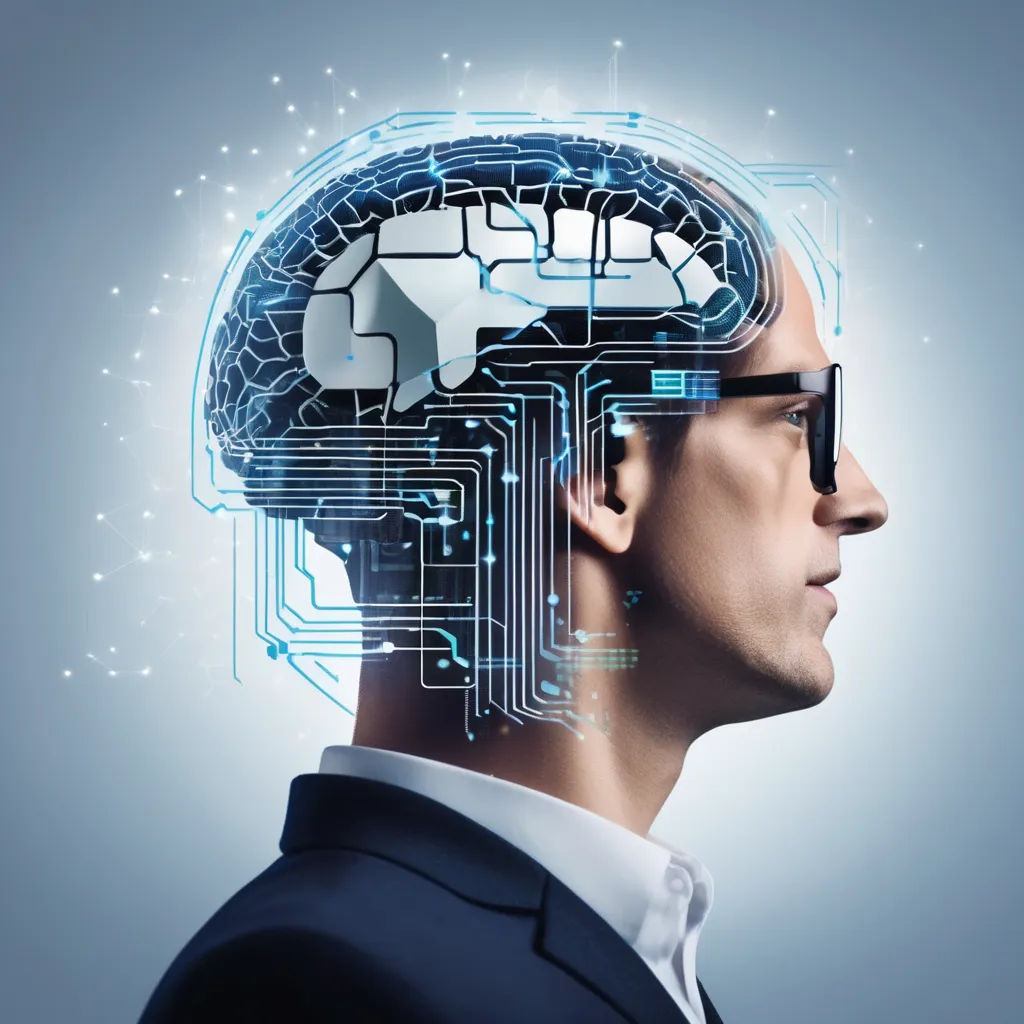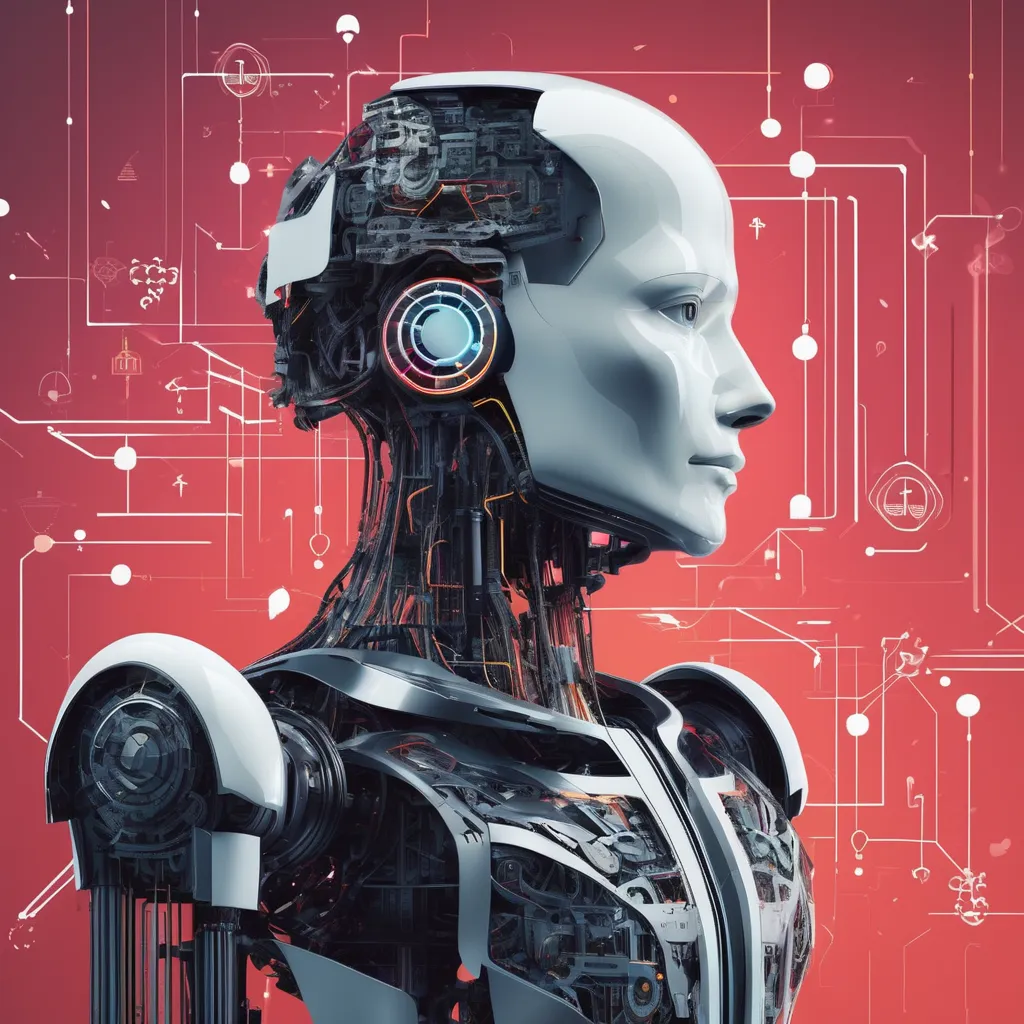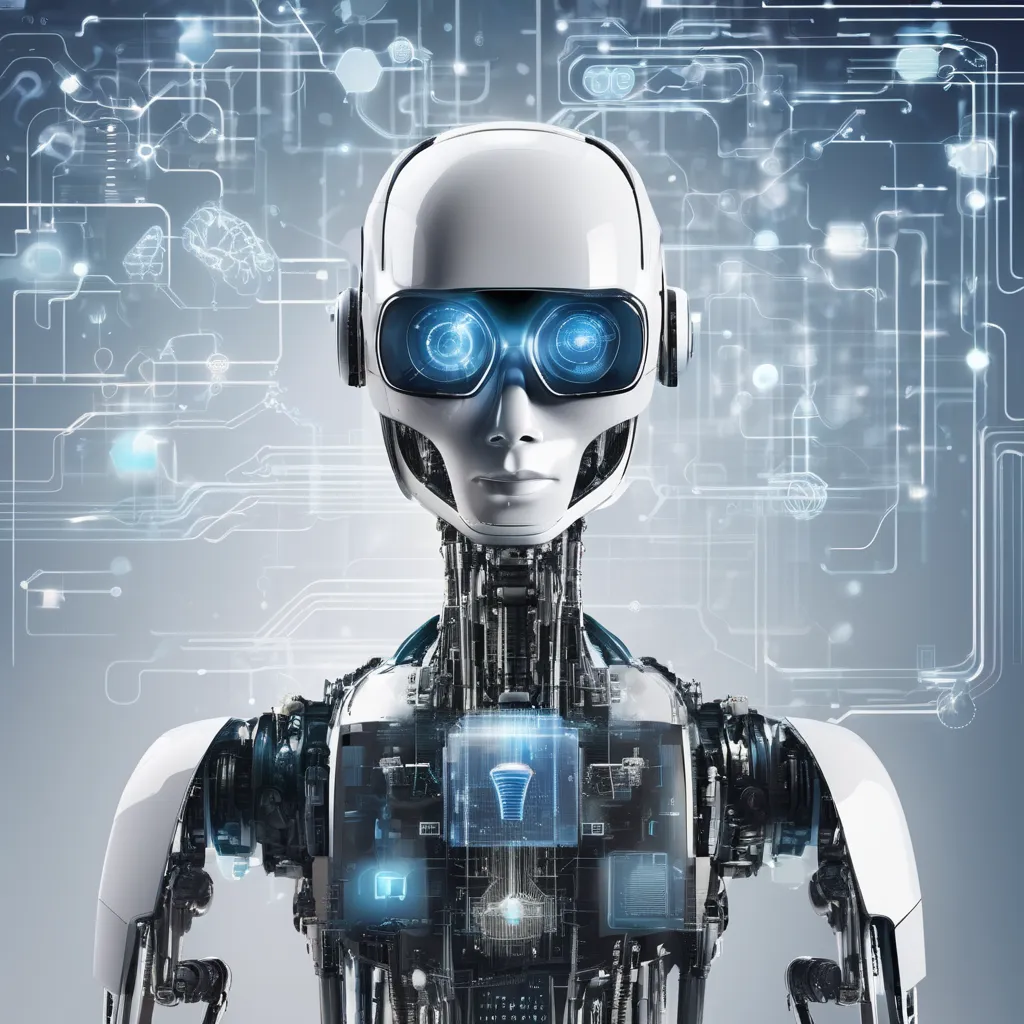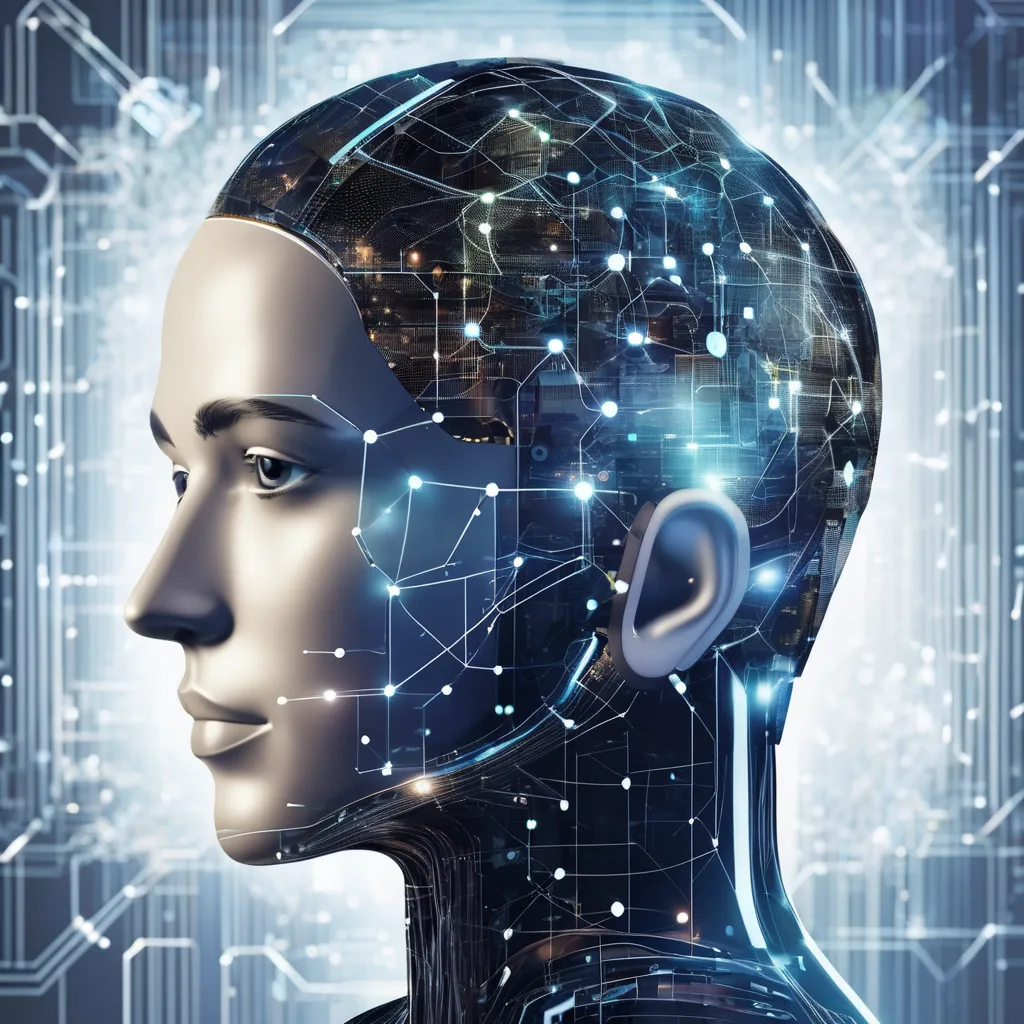Mere decades ago, the concept of machines simulating human intelligence was firmly entrenched in the realm of science fiction. Fast forward to today, and we find ourselves on the cusp of an AI revolution that promises to reshape virtually every sector of our society. How did we transition from speculative fiction to an era where AI-powered systems diagnose diseases, drive cars, and even compose music?
Charting the history of AI reveals a trajectory marked by groundbreaking milestones and intermittent periods of stagnation. From Alan Turing’s 1950s vision of machine intelligence to the recent triumph of deep learning algorithms, the journey has been both tumultuous and thrilling. While AI offers unprecedented efficiencies and solutions, it also introduces complex ethical dilemmas, such as biases in data and the potential for job displacement.
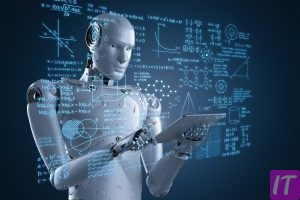
The Pioneering Years of Artificial Intelligence
Artificial Intelligence (AI) began its journey in the 1950s. Alan Turing, a British mathematician, introduced the Turing Test in 1950. This test aimed to measure a machine’s ability to exhibit intelligent behavior like a human. If people couldn’t tell the machine from a human, it passed the test. Turing’s vision planted the first seeds of AI’s future.
Another milestone came in 1956 during the Dartmouth Conference. Researchers gathered to discuss the possibilities of machines simulating human intelligence. John McCarthy, one of the organizers, coined the term “Artificial Intelligence.” This event is widely regarded as the birth of AI as a field of study. It set the stage for decades of research and development.
In the early years, AI research focused on problem-solving and symbolic methods. Scientists aimed to teach computers to perform tasks such as playing chess and solving mathematical problems. However, progress was slow due to limited computational power. Despite these challenges, pioneers like Marvin Minsky and Herbert Simon pushed the boundaries of what AI could achieve.
By the 1970s, AI also started exploring natural language processing. Researchers aimed to enable computers to understand and generate human language. Early systems, like ELIZA, mimicked human conversation, though quite simplistically. These efforts laid the groundwork for future advancements in machine learning and deep learning. The pioneering years laid a crucial foundation for the AI technologies we use today.
What is Artificial Intelligence? Advantages and Disadvantages of AI #aiexplained
The Genesis of AI: Turing Test and Birth of Lidar
Alan Turing’s Turing Test was a groundbreaking idea in the early 1950s. It sought to determine if a machine could exhibit intelligent behavior indistinguishable from a human. The test involved a human evaluator interacting with both a machine and another human. If the evaluator couldn’t tell them apart, the machine passed the test. This concept spurred interest in developing intelligent machines.
While Turing’s test laid theoretical groundwork, practical advancements were also taking place. Lidar technology, short for “Light Detection and Ranging,” emerged in the 1960s. Initially used for mapping and navigation, it employs lasers to measure distances accurately. This technology became foundational in various fields, including geology and autonomous vehicles. Lidar provides machines with the ability to “see” their environment.
- Alan Turing’s Turing Test was introduced in 1950.
- Lidar technology was developed in the 1960s.
- Lidar uses laser pulses to measure distances.
- It is crucial for applications like autonomous vehicles and geoscience.
The Turing Test and Lidar each represent pivotal moments in AI’s early history. While one provided a theoretical framework, the other offered practical tools. These innovations set the stage for further developments in artificial intelligence. They illustrate the blend of abstract and applied research that defines the field. Their legacy continues to influence modern AI technologies.
AI’s Mainstream Surge: Deep Learning and Neural Networks
Artificial intelligence made significant strides with the advent of deep learning in the 21st century. Deep learning utilizes neural networks, which are designed to mimic the human brain’s structure and function. Neural networks consist of interconnected layers of nodes, or neurons, that process data. With large datasets and powerful computational resources, deep learning models can now recognize patterns and make decisions. This revolutionized fields like image and speech recognition.
The success of neural networks is often attributed to their ability to learn from vast amounts of data. Companies like Google and Facebook harness these models for various applications. For instance, Google’s DeepMind developed AlphaGo, an AI that defeated a world champion at Go, a complex board game. Similarly, Facebook uses neural networks for content moderation and personalization. These applications highlight deep learning’s versatility and power.
- Deep learning mimics the human brain’s structure.
- Neural networks process data through interconnected layers.
- AlphaGo is a notable achievement in AI.
- Facebook uses deep learning for moderation and personalization.
Despite its success, deep learning also poses challenges and limitations. Training neural networks requires enormous computational power and vast datasets. This raises concerns about energy consumption and environmental impact. Additionally, deep learning models can sometimes be opaque, making it difficult to understand how they arrive at specific decisions. These issues continue to be areas of active research and discussion.
Overall, the mainstream surge of AI through deep learning and neural networks has opened doors to countless possibilities. From advancing healthcare with better diagnostic tools to improving daily life with virtual assistants, the impact is profound. As technology evolves, so too will the applications and ethical considerations of AI. The journey of deep learning is far from over, promising exciting developments ahead.
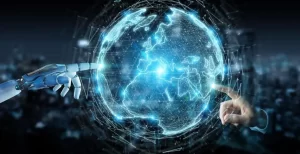
Advantages of AI: Revolutionizing Industry and Lifestyle
Artificial intelligence has reshaped many industries, offering unprecedented efficiency and innovation. In manufacturing, AI-driven robots handle repetitive tasks, reducing errors and increasing production speed. These robots work alongside humans, creating safer and more efficient environments. Predictive maintenance, enabled by AI, helps avoid costly equipment breakdowns. This results in significant cost savings and improved workplace safety.
The healthcare industry also benefits tremendously from AI. Diagnostic tools powered by AI analyze medical images with remarkable accuracy. This allows doctors to detect diseases like cancer at earlier stages. AI systems can also predict patient outcomes and recommend personalized treatment plans. These advancements improve patient care and streamline hospital operations.
In the financial sector, AI automates tasks that once took hours. Algorithms can quickly analyze large datasets to detect fraud and predict market trends. This ensures more secure transactions and better investment strategies. Chatbots powered by AI enhance customer service, providing instant responses to queries. This improves customer satisfaction and frees up human agents for more complex tasks.
- AI-driven robots enhance manufacturing efficiency.
- AI diagnostic tools in healthcare improve disease detection.
- Financial algorithms detect fraud and predict trends.
- AI chatbots enhance customer service.
Retail businesses use AI to personalize shopping experiences. Recommendation systems analyze customer behavior to suggest products they are likely to buy. This increases sales and improves customer loyalty. Inventory management becomes more efficient with AI predicting stock levels. This means fewer stockouts and overstock situations.
Autonomous vehicles are another remarkable application of AI. These self-driving cars use sensors and AI algorithms to navigate safely. They promise to reduce accidents caused by human error. Autonomous vehicles could transform public transportation and logistics. This technology is still advancing, but its potential impact is enormous.
Overall, AI enhances convenience and efficiency in everyday life. Virtual assistants like Siri and Alexa help users manage tasks and retrieve information quickly. Smart home devices adjust lighting, temperature, and security settings based on user preferences. These AI applications save time and energy, making daily routines smoother and more enjoyable.
AI’s Double-Edged Sword: Ethical and Societal Impacts
AI technology brings significant ethical and societal challenges. One major issue is bias in algorithms. If AI systems are trained on biased data, they can perpetuate and even worsen discrimination. This has serious implications in areas like hiring and law enforcement. Efforts are ongoing to make AI more fair and transparent.
Privacy is another major concern. AI systems often rely on massive amounts of data to function effectively. This raises questions about how data is collected, used, and shared. Unauthorized access or misuse of personal data can lead to privacy violations. Regulations like GDPR aim to protect individual privacy in the age of AI.
- Bias in algorithms can perpetuate discrimination.
- Data collection practices raise privacy concerns.
- AI can lead to job displacement.
- Ensuring AI transparency is crucial.
Job displacement is a significant societal impact of AI. Many tasks previously done by humans are now automated by machines. This can lead to job losses in certain industries. However, it also creates new opportunities in tech and AI-related fields. Balancing job losses with new opportunities is crucial for a stable economy.
Autonomous weapons pose a serious ethical dilemma. These systems can operate without human intervention, making decisions to engage targets. This raises questions about accountability and moral responsibility. Many experts call for regulations to prevent the misuse of AI in warfare. Ethical guidelines are essential to ensure responsible AI development.
AI’s impact on mental health is also noteworthy. Social media platforms using AI algorithms can affect mental well-being. These algorithms often promote sensational or polarizing content, which can lead to increased stress and anxiety. Responsible AI use in digital platforms is essential for maintaining mental health. Recognizing these issues early can help mitigate negative impacts.
Overall, the ethical and societal impacts of AI are complex and multifaceted. While AI offers numerous benefits, it also introduces challenges that need careful consideration. Addressing these ethical concerns is crucial for responsible AI development. This ensures that society can reap the benefits of AI while minimizing its drawbacks.
Exploring Future Trajectories of AI Development
The future of AI is filled with exciting possibilities and advancements. One of the most anticipated developments is AI’s role in healthcare. Emerging AI systems could predict diseases even before symptoms appear. Researchers are working on AI models that analyze genetic information to customize treatments. This would revolutionize personalized medicine and improve patient outcomes.
Another area of interest is AI in climate change mitigation. AI can analyze vast amounts of environmental data to predict and manage natural disasters. These systems could help in developing better strategies for reducing carbon footprints. Renewable energy sources like wind and solar power can also benefit from AI optimization. Future AI systems will be crucial in creating sustainable solutions for the planet.
- AI in healthcare predicts diseases early.
- AI helps manage natural disasters.
- AI optimizes renewable energy use.
- AI enhances personalized medicine.
Education is another field poised for significant transformation through AI. Adaptive learning systems can customize educational content to meet individual student needs. This personalization helps enhance learning outcomes and student engagement. Moreover, AI can assist teachers by automating administrative tasks. This allows educators to focus more on teaching and mentoring students.
In the transport sector, AI is expected to make travel smarter and safer. Autonomous vehicles will likely become more common, reducing human error and accidents. AI can also optimize traffic flow to reduce congestion in cities. Public transportation systems can benefit from AI-driven schedules and route planning. These advancements will change how we commute and travel.
The entertainment industry will see continued evolution through AI. AI algorithms already play a role in content recommendation on platforms like Netflix. Future AI systems could create entirely new forms of art, music, and storytelling. Virtual reality experiences may become more immersive with AI-generated environments. The fusion of AI and creativity promises an exciting future for entertainment.
Overall, AI’s future trajectories offer immense potential across various fields. From healthcare and climate change to education and entertainment, the impact will be profound. As these technologies advance, ethical considerations will remain crucial. Ensuring that AI development is responsible and equitable will be key to harnessing its benefits. The journey into AI’s future is just beginning, with many more innovations on the horizon.
Frequently Asked Questions
Learn more about the fascinating field of artificial intelligence and its impacts. Here we address some common questions experts often have about AI.
1. What are examples of artificial intelligence in everyday life?
Artificial intelligence is embedded in many aspects of our daily routines. Voice assistants like Siri and Alexa help manage tasks, while recommendation systems on platforms like Netflix suggest movies based on viewing habits. AI also assists in navigation apps, such as Google Maps, by analyzing traffic data to provide efficient routes.
In healthcare, AI plays a significant role in diagnosing diseases through medical image analysis. Additionally, customer service chatbots use AI to handle queries and solve problems quickly. These examples show how AI enhances convenience and efficiency in our lives.
2. How does artificial intelligence improve healthcare?
AI significantly advances healthcare by improving diagnostics and treatment plans. Systems using AI can analyze medical images with high accuracy, helping doctors detect conditions like cancer early. Predictive analytics enable personalized treatment plans based on patient data, enhancing care quality.
Moreover, AI-powered robots assist surgeons in performing precise surgeries, reducing recovery time for patients. Administrative tasks such as scheduling appointments are also streamlined using AI, allowing healthcare professionals to focus more on patient care.
3. Can artificial intelligence eliminate human jobs?
The rise of AI does pose the risk of job displacement in various industries. Automated systems can perform repetitive tasks faster and more accurately than humans, leading to job losses in fields like manufacturing or data entry. However, new opportunities arise as well; roles requiring advanced tech skills become increasingly important.
Reskilling programs can help workers adapt to these changes by learning new skills relevant to the evolving job market. Therefore, while AI may replace certain jobs, it also creates avenues for growth and development in others.
4. What ethical concerns surround artificial intelligence?
Ethical concerns about AI often involve issues of bias and privacy. If algorithms are trained on biased data, they can produce unfair results that inadvertently discriminate against certain groups of people. Maintaining transparency in how these algorithms work is crucial for accountability.
Privacy is another critical issue; massive amounts of personal data are collected to train AI systems, raising concerns over misuse or unauthorized access. Regulations like GDPR aim to protect individuals’ privacy rights but require continuous effort from developers to ensure compliance.
5. How is artificial intelligence used in education?
In education, AI provides personalized learning experiences tailored to individual student needs. Adaptive learning systems adjust content difficulty based on a student’s performance and understanding levels, ensuring better engagement and outcomes.
AI also automates administrative tasks such as grading assignments or tracking attendance, freeing up educators’ time for direct instruction and mentoring students more effectively. This integration helps enhance both teaching efficiency and student learning quality.
How will AI change the world?
Conclusion
Artificial intelligence has come a long way since its early beginnings. From the Turing Test and Lidar to deep learning and neural networks, AI has significantly evolved. This journey has brought both exciting advancements and complex challenges.
While AI offers remarkable benefits, such as revolutionizing healthcare and enhancing daily life, it also presents ethical and societal concerns. Balancing these advantages and challenges will be key to shaping a future where AI contributes positively to society. Ongoing research and thoughtful regulation will be essential in navigating this path.

